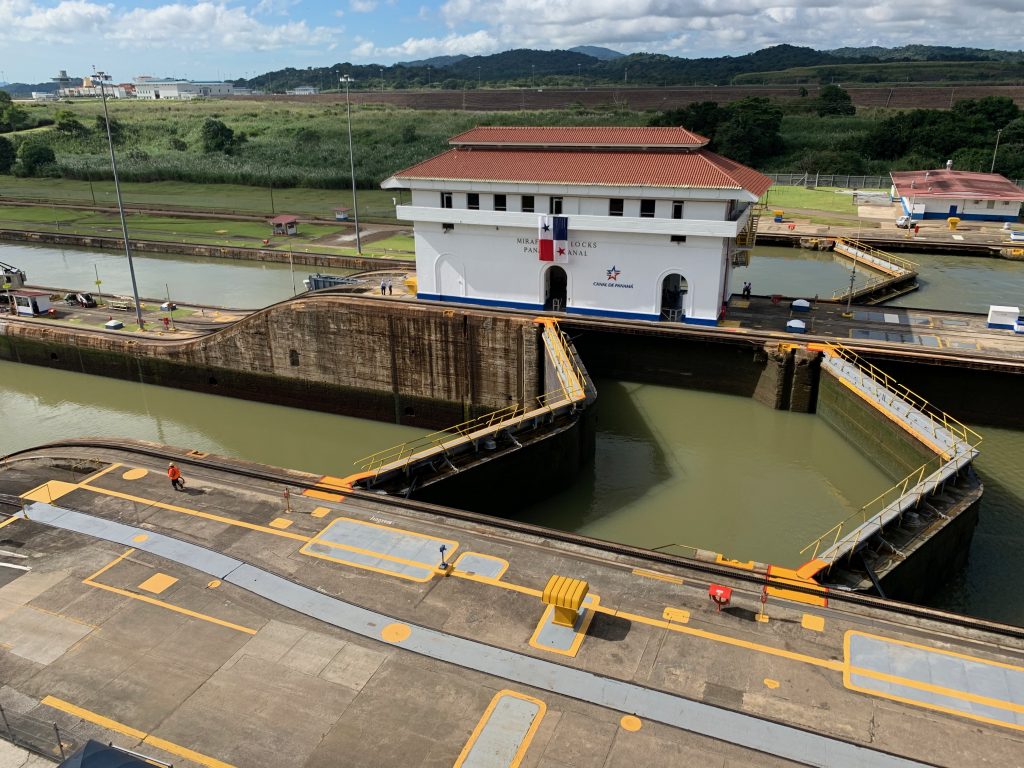The Panama Canal’s Water Problem

The Panama Canal still holds title to one of the greatest engineering marvels in the world, even after a full century of operation. Last week on a trip to Panama I got to see it first hand.
I will cite a few of the bullet points that stuck with me and then share the problems now posed by climate change.
- The passage takes from ocean to ocean about 11 hours but can reduce shipping time around South America by 23 days, making it a vital and valuable link in the global supply chain.
- The fee for the passage of each cargo ship is based on the tonnage and number of containers and can range from a few hundred thousand dollars, up to a million dollars
- Vessels are lifted 85 feet (26 meters) in three stages by the locks, and then lowered after crossing Lake Gaitun
- Each ship that makes the passage requires 52 million gallons of water to fill and operate the locks
- The original canal completed in 1914 is still operating with the dual lock system pictured.
- In 2016, a single larger canal was completed capable of taking larger “post-Panamax” ships
There are no pumps in the entire system; the water is all gravity fed, starting with Lake Gaitun at the top. The lake is fed by rivers, primarily the Chagres, which originates up in the mountainous rainforest region.
Climate change is changing rainfall patterns in the last few years. Although there have been a few times with too much rain, causing flooding, drought is the bigger problem. When the lake level is low, such as this summer, it cannot accomodate fully loaded ships, as they would hit bottom.
That causes two economic impacts: a) the shipping companies lose revenue, due to restricting the amount of cargo containers to lighten the load, and b) the Canal Authority and the government of Panama cannot charge the full fees, as they would if the ships were able to cross with maximum loads.
Efforts to dredge Lake Gaitun deeper are underway but are challenging and very expensive. If the drought conditions get worse in the warming world of climate change, they are looking at the possibility of creating other artificial lakes to store more water when there is rain. Costs and ecological impacts are considerable. Pumping water is seen as a last resort, since the costs for the pumps and the electricity would be huge and and would change the economics for all parties.
Changing rainfall patterns is becoming a problem worldwide. This was predicted, with a warmer ocean, evaporating more water into the atmosphere and changing ocean and air currents as the Arctic melts. It’s all connected. Like so many places around the world, Panama is being impacted in unexpected ways.
